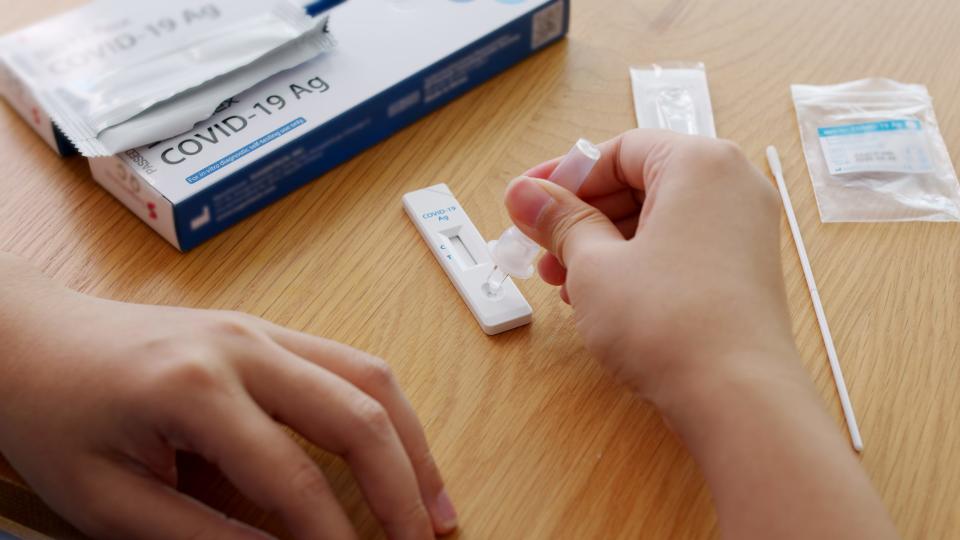COVID variant JN.1 is nearly half of COVID cases in US, CDC says. What are the symptoms?
COVID cases continue to rise across the U.S. and the newest COVID variant, dubbed JN.1, is now accounting for majority of the latest cases.
JN.1 is currently the fastest growing variant – and the dominant one – making up nearly half (44.2%) of cases in the U.S., as of Friday Dec. 22 when the CDC released the latest data. Based on its findings, the CDC estimates the variant is now responsible for between 39% and 50% of all COVID cases, up from the previously reported 15%-29%.
The CDC estimates that JN.1 is strongest in the Northeast U.S. including New Jersey and New York, where it accounts for nearly 57% of cases. In the West (Arizona, California, Nevada), it accounts for about 41%, and in the mid-Atlantic (including Maryland, Pennsylvania, Virginia, and West Virginia), JN.1 accounts for about 39% of cases.
The rise of JN.1 comes fewer Americans are getting vaccines against COVID-19, flu and viruses. The CDC last week issued a health advisory to medical caregivers saying that low vaccination rates against influenza, COVID-19, and RSV (respiratory syncytial virus) "could lead to more severe disease and increased healthcare capacity strain in the coming weeks."
Of most importance to holiday travelers, JN.1 is likely more transmissible than other variants "or better at evading our immune systems than other circulating variants," the Centers for Disease Control and Prevention said Friday.
COVID tests: How and where to get them as cases of JN.1 variant surge amid holidays

Preventive measures, treatment still the same for newest COVID variant JN.1
The JN.1 COVID variant descends from the omicron family substrain BA.2.86, or Pirola, which hit the U.S. this summer. First detected in the U.S. in September, JN.1 has been recorded in 12 countries including Canada, France, the U.K., Singapore, and Sweden. Canada, Last week, China reported seven JN.1 infections, Reuters reported.
Wearing masks, ventilating rooms, current tests, vaccines and treatments "still work well against JN.1," the CDC said Dec. 22. "At this time, the spread of JN.1 does not appear to pose additional risks to public health beyond that of other recent variants. CDC is closely monitoring COVID-19 increases domestically and internationally and will communicate if the situation changes."
New and ongoing COVID hospital admissions, COVID diagnoses in emergency rooms, and the percentage of test results positive for COVID, have risen steadily since November through the week ending Dec. 16. But they remain below that seen in the wake of and during the pandemic, according to the CDC.
This follows a pattern of COVID-19 rising to a peak in late summer, slowing and then peaking again around the new year. "Right now, we do not know to what extent JN.1 may be contributing to these increases or possible increases through the rest of December like those seen in previous years," the agency said.
Deaths due to COVID have fallen slightly, but that could be because cause of death statistics can lag behind other results.
What are the JN.1 COVID variant symptoms?
Symptoms of COVID-19 infection as a result of JN.1 remain similar to that from other variants, the CDC says. They may include:
Fever or chills.
Cough.
Sore throat.
Congestion or runny nose.
Headache.
Muscle aches.
Difficulty breathing.
Fatigue.
New loss of taste or smell.
"Brain fog" (feeling less wakeful and aware).
Gastrointestinal symptoms (upset stomach, mild diarrhea, vomiting).
Contributing: Mary Walrath-Holdridge
Follow Mike Snider on X and Threads: @mikesnider & mikegsnider.What's everyone talking about? Sign up for our trending newsletter to get the latest news of the day
This article originally appeared on USA TODAY: COVID symptoms: JN.1 now makes up close to half of new US COVID cases

